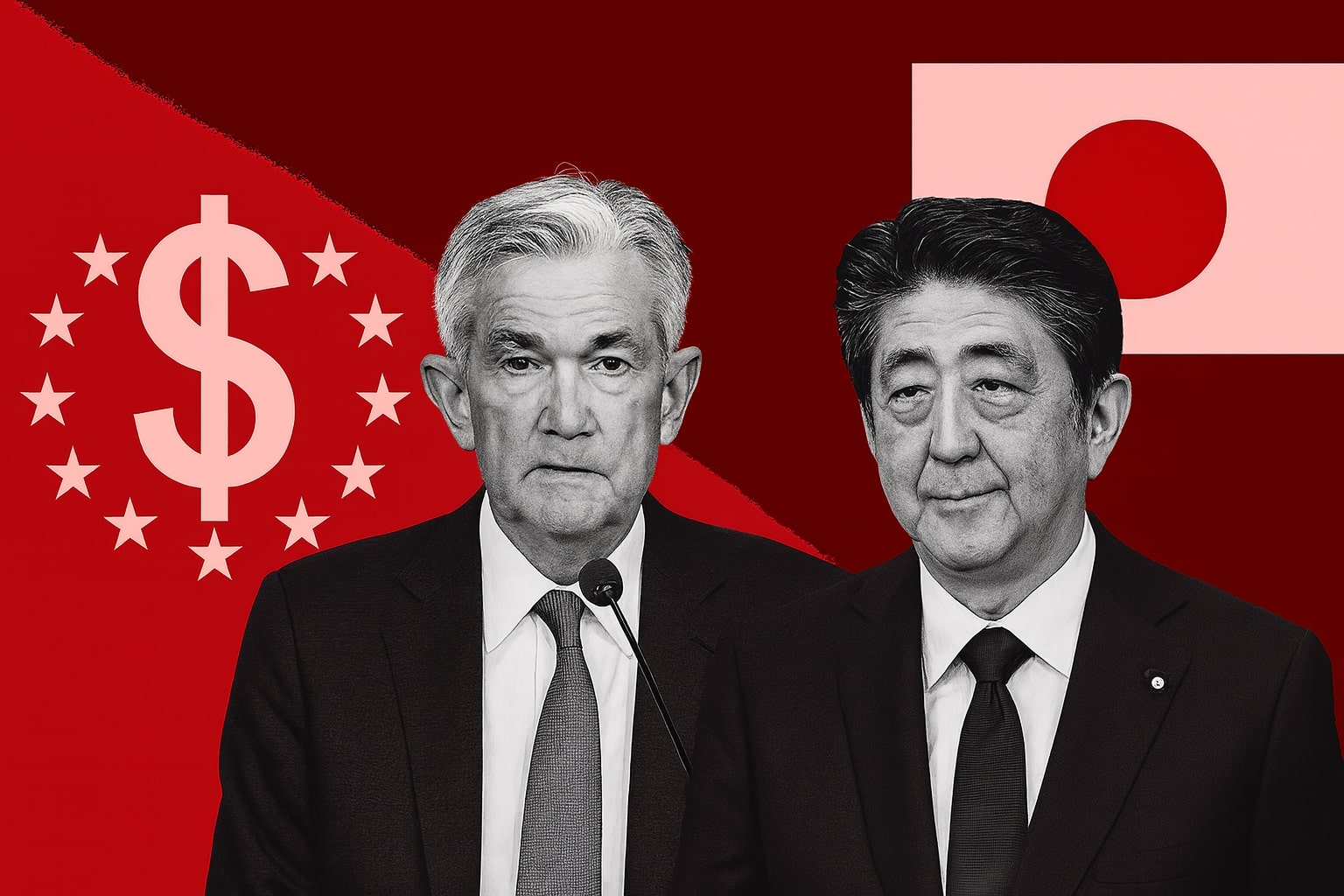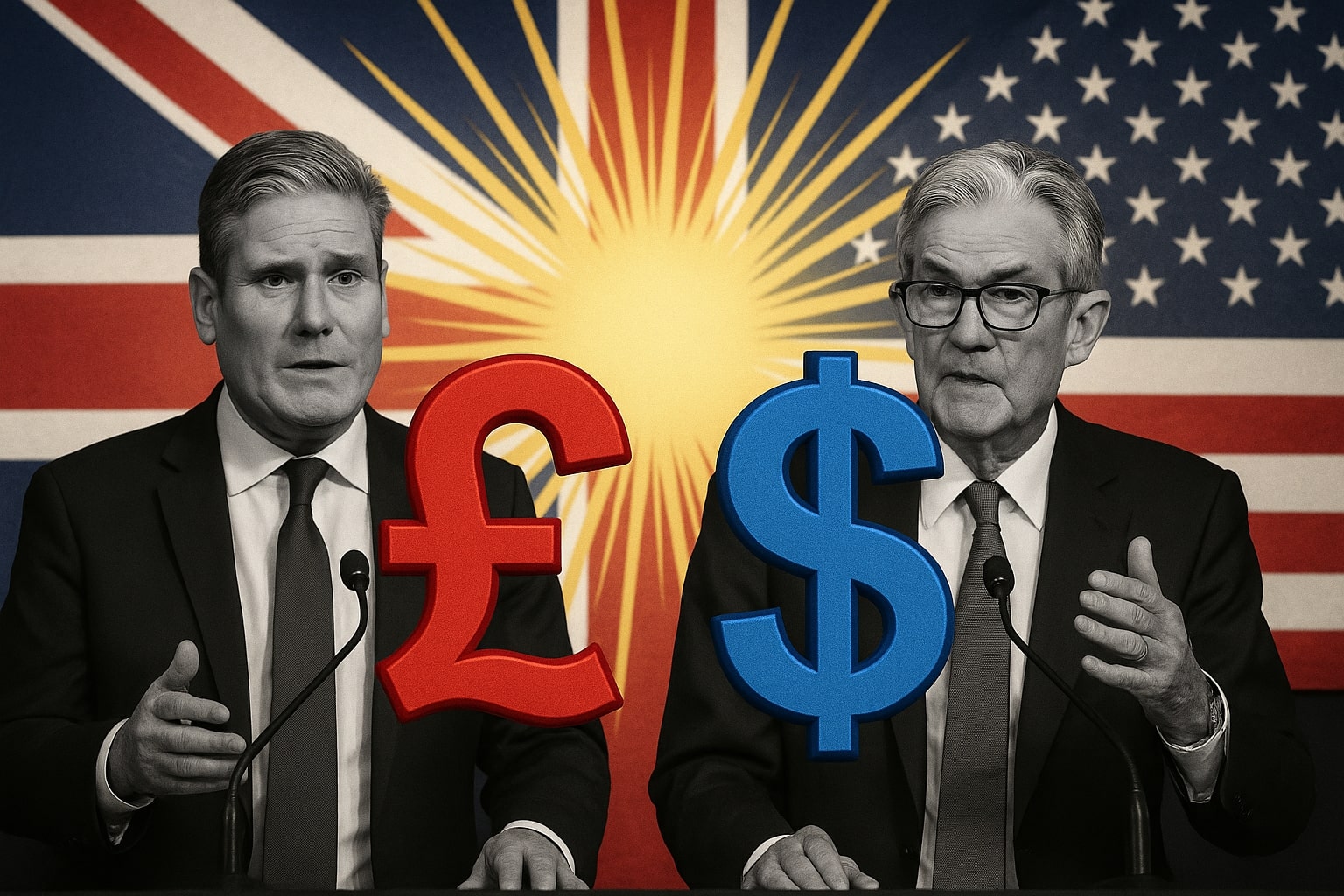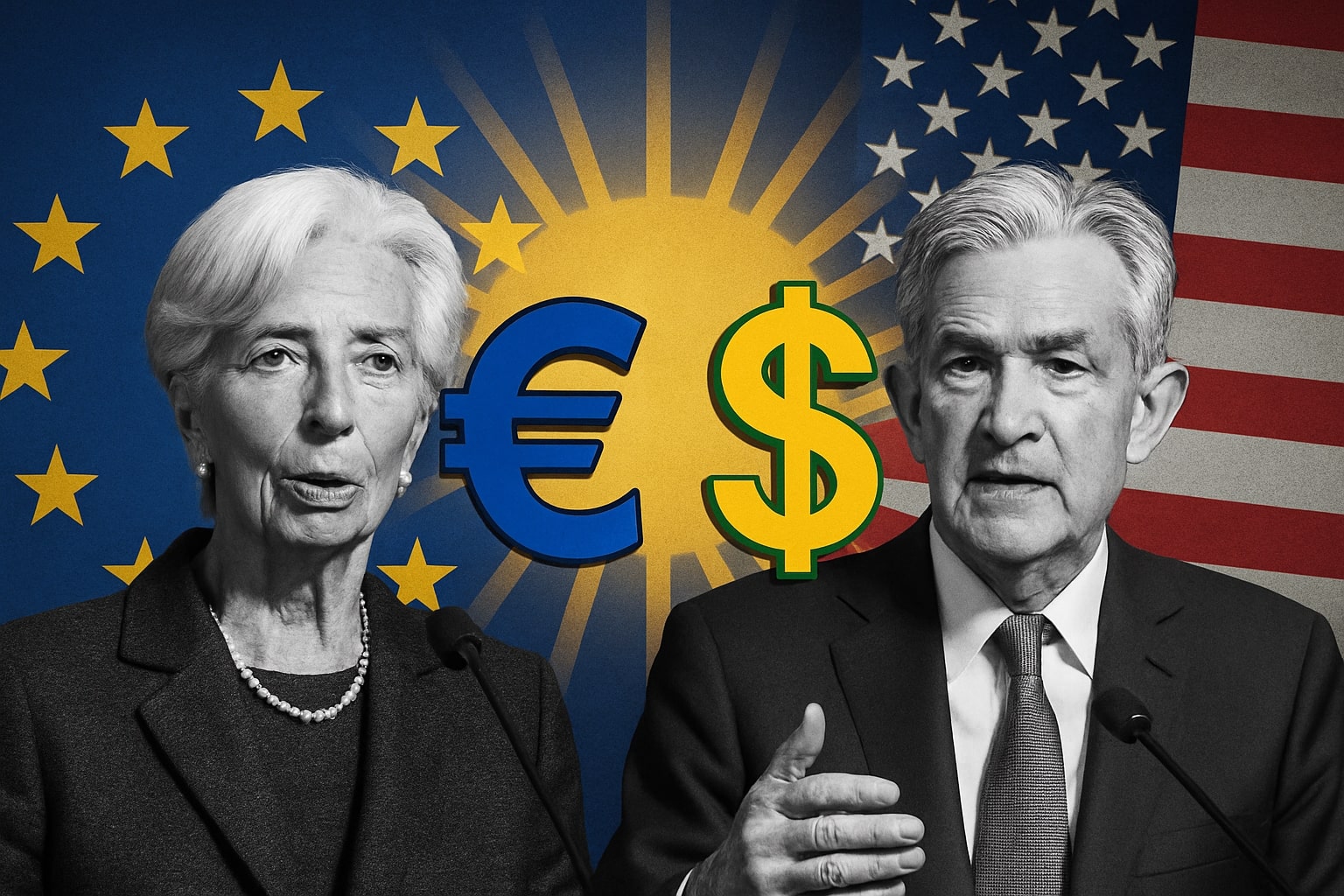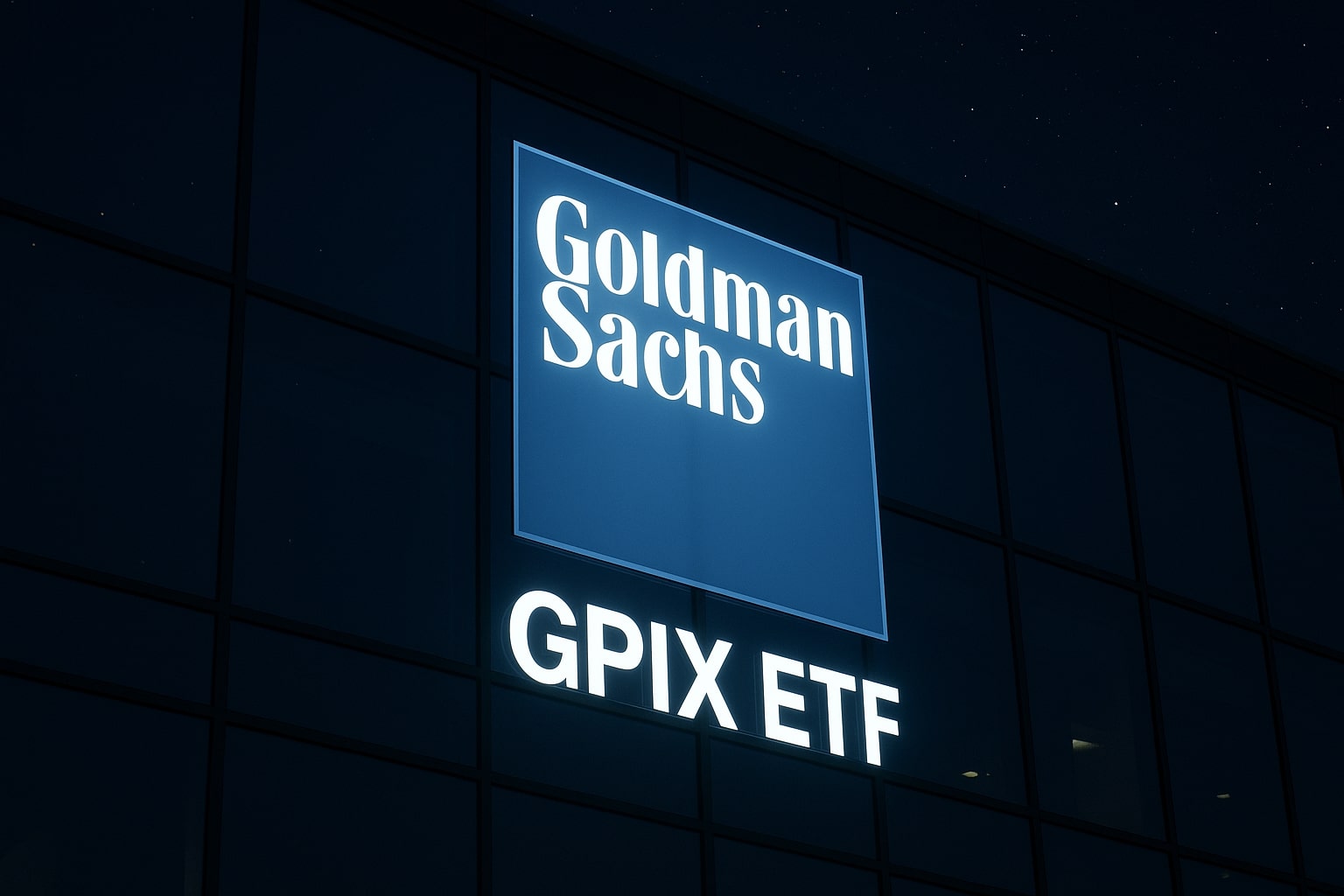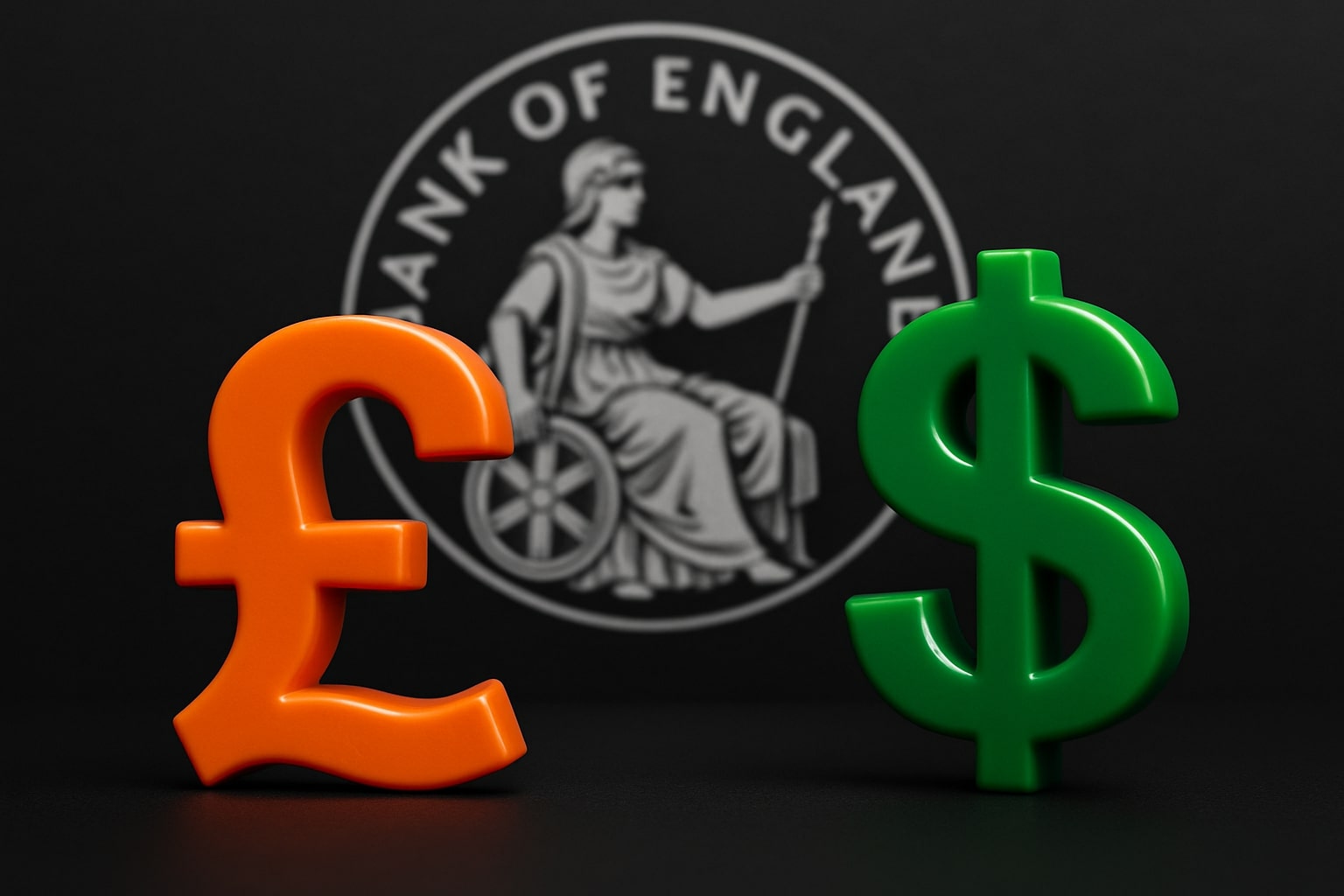
GBP/USD Price Forecast - Pound Falls to 1.3280 as Fiscal Pressures and Safe-Haven Flows Drive Sterling Toward 1.3150
Sterling weakens as tax hikes and weak growth overshadow BoE’s hawkish stance, while the U.S. dollar holds firm above 99.50 amid global risk aversion | That's TradingNEWS
GBP/USD (Cable) Falls to 1.3280 as Fiscal Tensions, Safe-Haven Flows, and Overstretched U.S. Dollar Dominate the Market
Sterling Struggles as U.K. Fiscal Concerns Intensify Ahead of Autumn Statement
The British pound (GBP/USD) dropped to a fresh two-month low near 1.3280, marking its steepest decline since late August. Fiscal pressures in the U.K. remain a central driver of this weakness, as investors brace for the Autumn Statement in November, where Chancellor Rachel Reeves is expected to announce new tax increases aimed at offsetting the widening public deficit. Market sentiment turned sharply risk-off as concerns grew that further fiscal tightening could choke economic momentum already strained by stagnant productivity and weak consumption.
Recent data showed U.K. GDP contracting by 0.1% in Q3, highlighting the fragility of the recovery. Meanwhile, inflation eased modestly to 2.8% in September, but wage growth remains elevated, forcing the Bank of England (BoE) to maintain its restrictive stance for longer. BoE policymaker Catherine Mann reinforced that view, emphasizing that “high inflation itself is behind scarring, income uncertainty, and weak consumption growth,” confirming that monetary policy will stay tight to ensure price stability.
U.S. Dollar Strength Anchored by Safe-Haven Demand and Labor Market Resilience
The U.S. dollar index (DXY) held near 99.56, a two-month high, supported by strong safe-haven demand amid political uncertainty in France and Japan and an unresolved U.S. government shutdown now entering its ninth day. Despite dovish expectations for further Federal Reserve rate cuts before year-end, investors continue to prefer the greenback due to its relative macro stability.
According to the CME FedWatch Tool, markets are pricing an 80% probability of a 50-basis-point cut by December, but the Fed remains cautious. Officials John Williams and Mary Daly acknowledged that the current monetary stance is restrictive, while Governor Michael Barr warned against “excessive easing” given that inflation remains unlikely to return to the 2% target within two years.
On the data front, the University of Michigan Consumer Sentiment Index slipped slightly to 55.0 in October from 55.1 in September, still better than expectations of 54.2. The mixed macro picture allows the Fed to justify a controlled easing path while maintaining dollar dominance as global investors retreat from risk-sensitive assets.
Technical Breakdown Confirms Sterling’s Bearish Momentum
From a technical perspective, GBP/USD broke decisively below the 200-day exponential moving average (EMA) near 1.3300, extending its decline toward key support at 1.3280. Momentum indicators, including the Relative Strength Index (RSI) at 36, show persistent bearish pressure without signaling oversold exhaustion. The 50-day EMA also turned downward, confirming a medium-term trend reversal since the September high of 1.3620.
Analysts at UOB Group noted that the sharp drop has increased downside momentum, projecting potential extensions toward 1.3245 in the short term and 1.3200 as the next key target if bearish momentum persists. Minor resistance stands at 1.3330, with stronger selling interest around 1.3410. Unless Sterling reclaims the 1.3460–1.3500 zone, the directional bias remains decisively negative.
Macro Divergence Between BoE and Fed Keeps Sterling Under Pressure
The divergence in monetary outlook between the Bank of England and the Federal Reserve remains the primary macro catalyst driving GBP/USD weakness. While both central banks are expected to ease policy into 2026, the Fed’s stronger labor market and deeper capital markets have allowed it to maintain a yield advantage. U.S. non-farm payrolls added 250,000 jobs in September, underscoring economic resilience, while U.S. 10-year Treasury yields hover above 4.50%, making the dollar more attractive from a carry perspective.
In contrast, the U.K. faces tightening fiscal conditions that limit BoE flexibility. With growth near stagnation and tax hikes expected to slow demand further, markets have priced in only a modest 25-basis-point rate cut by March 2026, compared to 100 basis points of Fed easing in the same window. This divergence continues to suppress GBP/USD’s upside momentum.
Fiscal Policy and Political Risk Amplify Sterling’s Fragility
Fiscal instability remains the Achilles’ heel for the pound. Investors are wary that higher corporate and income taxes could erode domestic investment, particularly as National Insurance contributions have already been lifted to 15%. Political infighting within the ruling Labour Party over fiscal discipline adds to volatility ahead of the November budget.
According to Commerzbank, disputes within Western governments over fiscal frameworks will likely “occupy markets for months,” keeping GBP/USD under pressure. Meanwhile, options market volatility has surged, reflecting growing uncertainty about the U.K.’s policy credibility and investor confidence heading into 2026.
Broader Market Sentiment and Technical Scenarios
The broader risk landscape remains defensive. Traders continue to shift away from risk-sensitive currencies as global geopolitical risks and U.S. fiscal gridlock dominate headlines. The ongoing government shutdown limits access to official U.S. economic data, adding uncertainty that paradoxically benefits the dollar.
Technically, GBP/USD’s next crucial support lies at 1.3200, while a break below that threshold could accelerate losses toward 1.3050. On the upside, a recovery above 1.3410 could signal temporary relief, but sustained rallies appear unlikely without an improvement in fiscal or economic data from the U.K. The RSI divergence remains muted, implying that any bounce would be corrective rather than structural.
Read More
-
GPIX ETF At $52.52: 8% Yield And Dynamic S&P 500 Income Upside
13.12.2025 · TradingNEWS ArchiveStocks
-
XRP ETFs Surge Toward $1B As XRPI Hits $11.64 And XRPR $16.48 With XRP Near $2
13.12.2025 · TradingNEWS ArchiveCrypto
-
Natural Gas Price Forecast: NG=F Hovers Near $4.07 Support After 22% Weekly Slide
13.12.2025 · TradingNEWS ArchiveCommodities
-
USD/JPY Price Forecast - Dollar to Yen at 154–158 Range as BoJ 0.75% Hike and Fed Cut Debate
13.12.2025 · TradingNEWS ArchiveForex
Comparative View: Short-Term Oversold but Medium-Term Weakness Persists
Short-term indicators suggest the pair is entering oversold territory, with daily momentum stretched after an eight-day losing streak. However, the medium-term structure still favors sellers, as long as Sterling remains below 1.3460, the level identified by UOB Group as “strong resistance.” The pair’s bearish trend aligns with fundamental realities — weaker growth, tightening fiscal policy, and a stronger U.S. yield curve.
VT Markets highlighted that risk-off sentiment has pushed traders to hedge via put options on GBP/USD, with implied volatility rising steadily since early October. The firm sees 1.2150 as the next major long-term support if macro deterioration continues through winter.
Verdict: GBP/USD – Bearish Bias Maintained, Target 1.3150–1.3200 Range
After weighing technical, fiscal, and monetary dynamics, the bias on GBP/USD remains bearish with downside potential toward 1.3150–1.3200 over the coming weeks. While oversold short-term conditions could trigger brief rebounds toward 1.3330, structural headwinds — including the U.K.’s fragile fiscal position, diverging central bank trajectories, and global safe-haven flows — make sustained rallies improbable.
The currency pair trades at 1.3280, and until fiscal clarity and growth stabilization emerge, investors should maintain a Sell/Short Bias on GBP/USD, with tactical profit-taking near 1.3150 and resistance capped at 1.3410.














